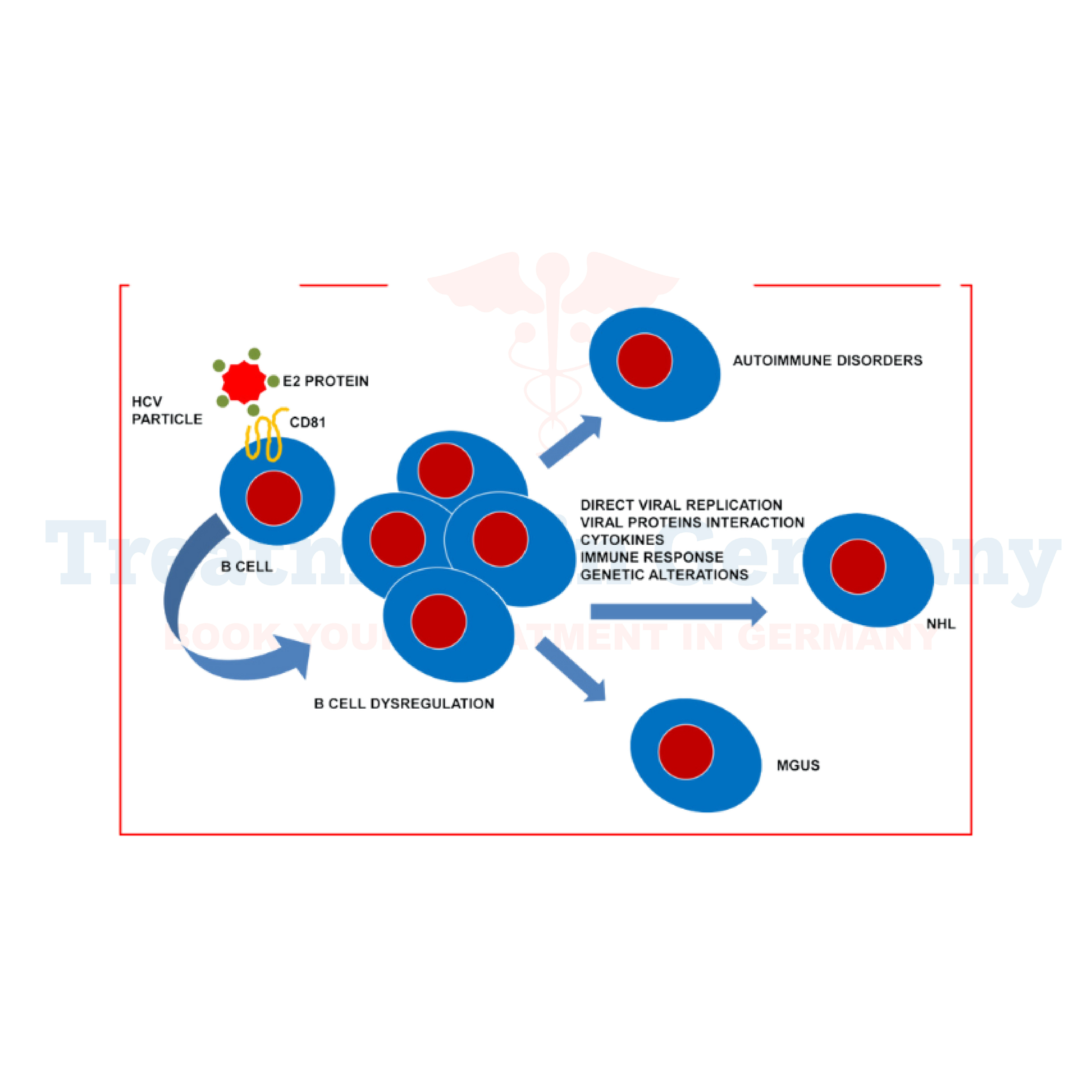What is Cryoglobulinemia?
Cryoglobulinemia is a rare disorder characterized by the presence of abnormal proteins called cryoglobulins in the blood.
These proteins can clump together under cold temperatures, leading to blockages in blood vessels and various health complications.
Symptoms may include skin rashes, joint pain, weakness, and in severe cases, damage to organs such as the kidneys and nervous system.
How is Cryoglobulinemia Diagnosed?
Diagnosis of cryoglobulinemia typically involves a series of tests after a patient presents with symptoms suggestive of the condition.
These tests often include blood tests to detect the presence of cryoglobulins, as well as further investigations such as imaging studies and biopsies to assess any organ involvement.
Potential Treatment of Cryoglobulinemia
Treatment of cryoglobulinemia aims to reduce symptoms, manage complications, and prevent progression of the disease. In Germany, the approach may involve:
Side Effects of Treatment
While treatments for cryoglobulinemia aim to improve symptoms and quality of life, they may also have potential side effects. These can vary depending on the medications used and should be discussed thoroughly with healthcare providers.

.webp)
.webp)
 (1).webp)
 (1).webp)

.webp)
.webp)
 (1).webp)
 (1).webp)
